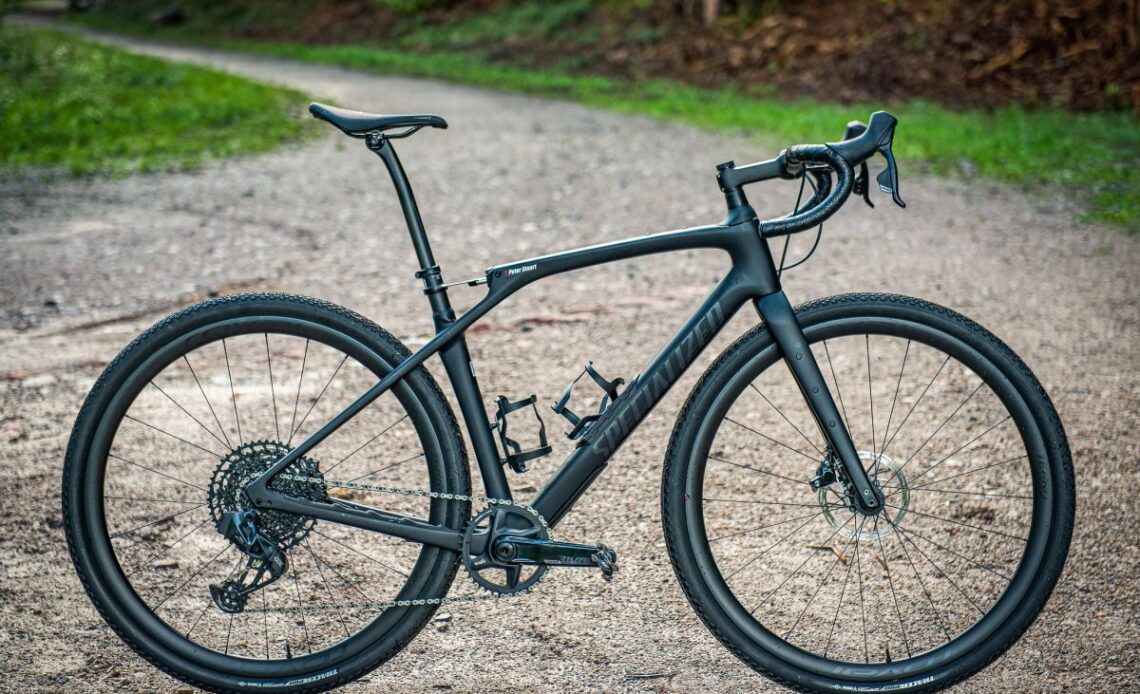You could be forgiven for getting lost in the debate over who exactly invented the gravel bike. Some would argue that those scaling the Alps in the middle of the twentieth century on steel road bikes, laden with panniers atop 19mm tubular tyres were the pioneers. The most recent trend for gravel-specific bikes, though, arguably landed around 2014 when the Specialized Diverge was early among the pioneers.
Launched within a few months of the GT Grade, and labelled as an “adventure bike”, the Diverge’s top-tier carbon offering was quick to be updated to an S-Works tier high-performance machine, complete with Specialized’s Future Shock front suspension unit.
Despite relatively few overall changes to its wider design, the latest Diverge STR represents the greatest leap forward in the Diverge’s history since its advent. Not only is this the first Diverge with rear suspension, but the very first rear suspension system developed by Specialized for either road or gravel.
Of course, this isn’t the first attempt to integrate rear suspension into a gravel bike. The Niner MCR 9 RDO, for instance, was a well-discussed foray into a more involved rear suspension system. It was often regarded as solving a problem that didn’t exist. Specialized’s solution promises the gains of rear suspension rethought for gravel – meaning much less weight, less pedalling sag and no compromises in rigidity and overall performance.
In that sense, Specialized’s Rear Future Shock probably calls to mind more subtle solutions like Moots’ YBB wishbone suspension system, mirrored by Pinarello’s DSS 1.0. Both of those failed to break into mainstream design, while Pinarello abandoned the DSS 1.0 altogether.
So will Specialized’s rear suspension prove more successful?
Rear Suspension
The Rear Future Shock that sits in the back half of the Diverge STR frame is a slightly jarring sight. It looks mechanical, exposed and almost frail, on first inspection. But this complex system is far from frail and does a great deal for the Diverge’s balance of performance and versatility.
“It would only fail in fatigue,” explains Specialized’s Creative Specialist, and the brains behind the project, Chris D’Aluisio when I asked about the potential for the thin alloy tendon to break. “We’ve used the same one in testing for so long, it has gone through millions and millions of cycles. It doesn’t go through enough flex to fatigue. That’s why we have…
Click Here to Read the Full Original Article at CyclingNews RSS Feed…

